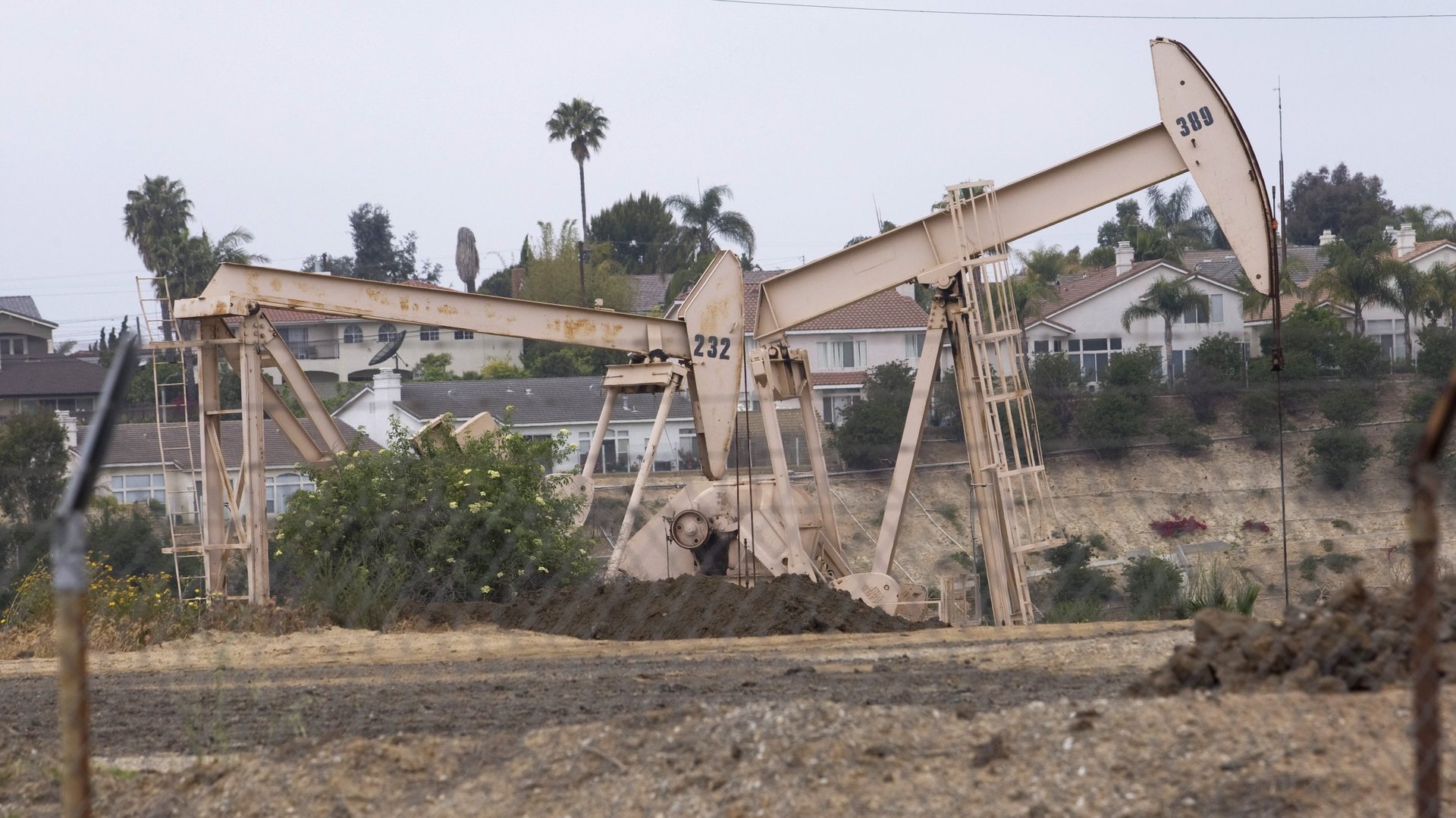Los Angeles County is finally shedding its Big Oil roots
Though the Hollywood sign makes it easy to forget, Los Angeles was built on oil. After extraction began in the late 19th century, California became one of the world’s top oil producers by 1920. Production has slowed in the 21st century, but there are still roughly 5,000 active wells in Los Angeles County today, often hidden in plain sight alongside roads, schools, and homes.


Though the Hollywood sign makes it easy to forget, Los Angeles was built on oil. After extraction began in the late 19th century, California became one of the world’s top oil producers by 1920. Production has slowed in the 21st century, but there are still roughly 5,000 active wells in Los Angeles County today, often hidden in plain sight alongside roads, schools, and homes.
But that may be coming to an end. On Sept. 15, the Los Angeles County board of supervisors voted unanimously to begin phasing out oil and gas drilling in the unincorporated areas of the county, potentially shutting down operations at approximately 1,600 wells. This action comes after years of protest from communities that live nearby the drill sites, where mostly Black and brown residents have dealt with the adverse health impacts of living near oil extraction sites.
Los Angeles County sits on the largest urban oilfield in the US, but is far from the only one. Roughly 17.6 million Americans live within a mile of an active oil or gas well, many of them in densely-populated metro areas. Years of scientific studies have shown that people living near oil production sites have a higher risk of health problems like asthma, childhood leukemia, and preterm births.
Urban drilling has long been an issue of environmental justice and safety for city residents, but local governments have had little power to intervene. Their attempts at reining in oil drilling often lose out to state legislatures and courts that favor oil industry interests. LA County’s move this week marks a new chapter for local government’s increased role in regulating oil industry activity.
The beginning of the end of oil in LA?
The measure approved by the LA County supervisors Wednesday will halt the construction of new oil wells in the area, and establish a process to study existing sites to figure out the fastest way to phase them out. It also makes it easier for county officials to revoke drilling permits for existing sites.
The largest impacted site is the Inglewood Oil Field, wedged in southwest side of the city, directly adjacent to several predominately Black neighborhoods. Residents of these communities have over the years complained of headaches, nausea, and other health effects they attribute to fumes associated with oil extraction. Earlier in 2021, a pipeline at the site leaked 1,600 gallons of oil near a park.
The county government has previously undertaken studies of the health impacts of the oilfields; one of them, from 2011, study found no conclusive evidence linking the fields to adverse health outcomes. Officials have instituted safety regulations for oil production facilities in the past, but this is the first time they have moved towards shutting down production.
The California Independent Petroleum Association opposed the move, saying in a letter that it would cost jobs, raise gas prices, and increase foreign oil dependency.
LA County’s measure is happening within a larger context of a state government that is eager to crack down on oil production. Earlier in 2021, a bill to ban fracking across the state was proposed but died in the state legislature. Shortly thereafter, however, governor Gavin Newsom introduced a plan to ban new fracking permits by 2024 and phase out all oil production by 2045.
US cities have little power to stop urban drilling
Although Los Angeles has the biggest urban oil field, it’s not the only place that has fought urban drilling. In other petrochemical hubs in Texas and Ohio, city residents have pushed back when drilling activity gets too close, but local governments are often no match for state authorities and a powerful oil industry.
In 2014, the city of Denton, near Dallas, became the first place in the state to pass a law banning fracking, following an outcry from residents over environmental and safety concerns. The law was quickly overturned, however, when the Texas oil lobby and the state sued the city. Texas’ state legislature then followed up with a law that effectively prohibited any locality from putting a similar ban on fracking, and generally weakened local governments’ ability to restrict drilling permits.
A similar thing has happened in Ohio. After a 2004 law was passed giving the state mineral resource management division exclusive authority over oil drilling permits, the number of wells grew significantly. By 2008, Cuyahoga County, which contains Cleveland and its suburbs, had 69 oil wells, the second-highest number in the state. In the years since, the wells have lowered property values, impacted people’s health, and caused tension between local governments and their residents. In 2015, the state supreme court also issued a ruling preventing local governments from regulating fracking.
These places with less local regulatory power over drilling activity are unlikely to see the type of broad ban that happened in LA County. Still, the decision is indicative of the harder stance governments are taking against extractive industries.